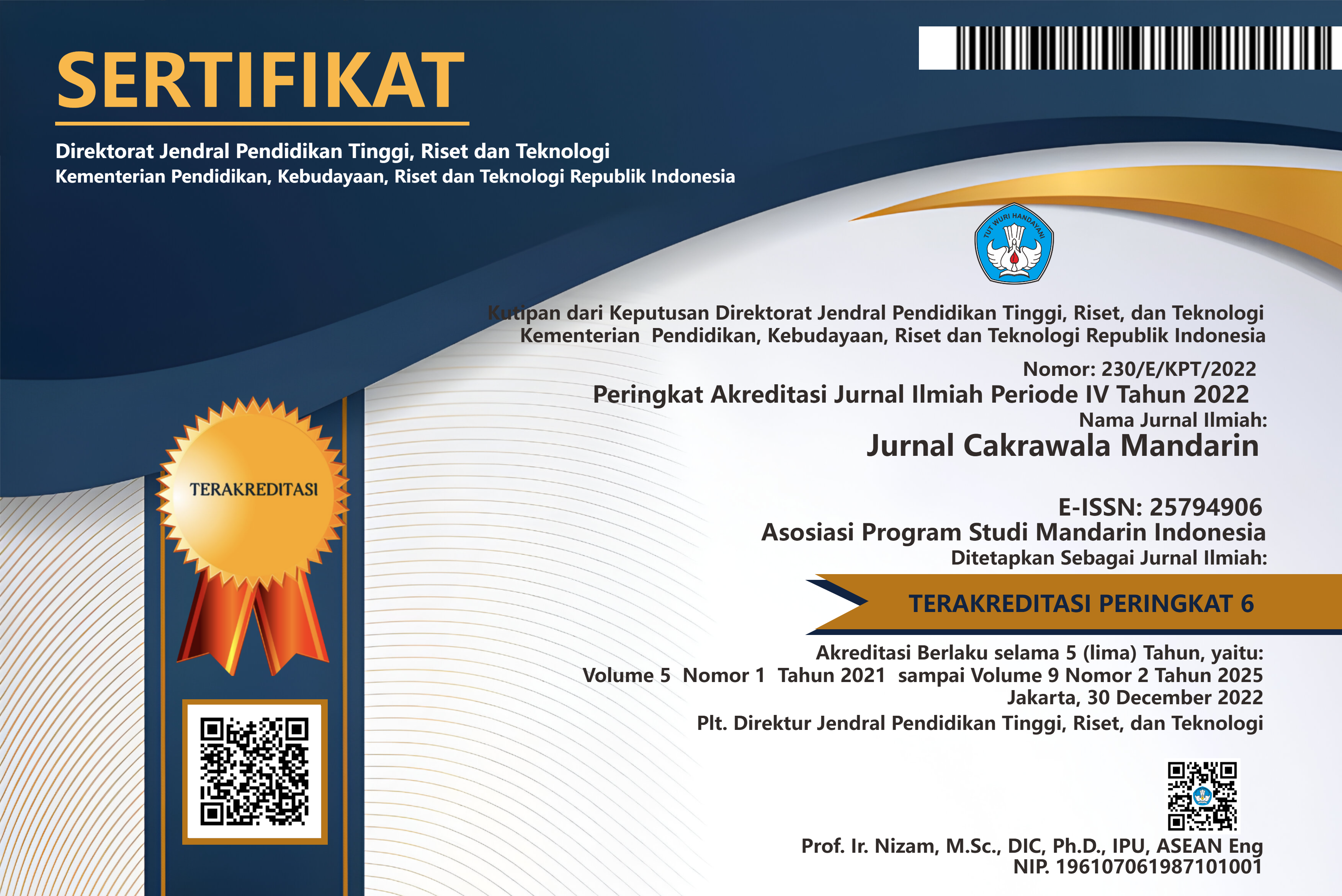Dynamics and Existence of Angkong in East Sumatra
Abstract
This paper reviewed the 'Dynamics and Existence of Angkong in East Sumatra'. Angkong is one of the public transportation used during the Dutch East Indies period in East Sumatra. This transportation is also known as the Hong Kong rickshaw. Humans formerly pulled it by running. These human-drawn angkong were generally brought indirectly by the Chinese who worked on the plantations. As Viktor Purcell wrote, most Chinese worked in the logging industry and as angkong porters. Before this, other forms of transportation were used, such as horse-drawn carriages, ox-carts, or buffalo carts. These kinds of transportation were used for special needs, such as in forest areas, and as a means to enter plantation areas that gardeners used at that time. This research intended to explain the dynamics and existence of rickshaw transportation in East Sumatra using the desk research method on research reports, various sources of books, journals, and related articles. This research also utilized the historical explanation theory from Kuntowijoyo. The distribution of angkong in East Sumatra did not immediately become public transportation but started from private ownership. It started with the gardeners seeing and supervising the plantations they manage.
Full Text:
PDFReferences
Ambarita, S. H. P. (2021). Angkong di Kota Medan pada Tahun 1890-1935. (Skripsi, Universitas Sumatera Utara Medan).
Buiskool, D. A. (2019). Prominent Chinese During the Rise of a Colonial City: Medan 1890-1942 (Doctoral dissertation, Utrecht University).
Buiskool, D. A. (2009). 6 The Chinese Commercial Elite of Medan, 1890-1942: The Penang Connection. Journal of the Malaysian Branch of the Royal Asiatic Society, 82(2), 113.
Chang, Q. (2016). Memories of a Nonya. Marshall Cavendish International Asia Pte Ltd.
Fung, C. M. (2005). Reluctant Heroes: Rickshaw Pullers in Hong Kong and Canton, 1874-1954 (Vol. 1). Hong Kong University Press.
Hoogervorst, T. (2021). “Do You Love China or Not?”: Late-Colonial Textbooks to Learn Mandarin through Malay. In Sinophone Southeast Asia (pp. 210-244). Brill.
Hyrapiet, S., & Greiner, A. L. (2012). Calcutta's Hand–Pulled Rickshaws: Cultural Politics and Place Making in a Globalizing City. Geographical Review, 102(4), 407-426.
Kuntowijoyo. (2005). Pengantar ilmu sejarah. Yogyakarta: Bentang Pustaka.
Ming, F. C. (2005). Reluctant Heroes: Rickshaw Pullers in Hong Kong and Canton, 1874-1954. Hong Kong University Press. http://www.jstor.org/stable/j.ctt2jc4bv
Pante, M. D. (2014). Rickshaws and Filipinos: transnational meanings of technology and labor in American-occupied Manila. International Review of Social History, 59(S22), 133-159.
Paulès, X. (2006). Fung Chi Ming, Reluctant Heroes. Rickshaw Pullers in Hong Kong and Canton, 1874-1954. China Perspectives, 66, 66.
Rudiansyah, R. (2021). TIPOMORFOLOGI ARSITEKTUR BANGUNAN PECINAN DI KESAWAN MEDAN. Berkala Arkeologi Sangkhakala, 24(2), 135-146.
Rudiansyah. (2017). Tipologi dan Makna Simbolis Rumah Tjong A Fie. Yogyakarta: Estilisium Graha Ilmu.
Rudiansyah, G. G., & Nugrahanto, W. (2017). Unsur Akulturasi Budaya pada Rumah Tjong A Fie di Kota Medan. PANTUN, 2(1), 44-53.
Steele, M. W. (2014). Mobility on the move: rickshaws in Asia. Transfers, 4(3), 88-107.
Sutton, D. S. (2007). [Review of Asian Borderlands: The Transformation of Qing China’s Yunnan Frontier, by C. P. Giersch]. The American Historical Review, 112(3), 828–830. http://www.jstor.org/stable/40006698
Said, M. (1976). Sejarah pers di Sumatera Utara, dengan masyarakat yang dicerminkannya, 1885-Maret-1942. Waspada.
Warren, J. F. (2003). Rickshaw coolie: A people's history of Singapore, 1880-1940. Singapore: NUS Press.
Warren, J. (1985). The Singapore rickshaw pullers: The social organization of a coolie occupation, 1880–1940. Journal of Southeast Asian Studies, 16(1), 1-15.
Zia, Khalydah., Rudiansyah, R. (2021). Tinggalan Cagar Budaya dalam Akulturasi Budaya Tionghoa di Kota Sibolga. Studi Budaya Nusantara, 5(2), 107-117.
Internet Source:
https://analisadaily.com/berita/baca/2021/09/08/1021751/mayor-tjong-a-fie-usulkan-penghapusan-rikshaw/
https://analisadaily.com/berita/baca/2021/09/07/1021703/kisah-becak-hongkong-di-medan-bagian-1/
https://analisadaily.com/berita/baca/2021/09/09/1021794/mendayung-sejarah-becak-hongkong/
https://inf.news/en/history/c2acd1e440097fb99fe44cf682fa5947.html
https://nationalgeographic.grid.id/read/132738106/angkong-gerobak-roda-dua-yang-menjadi-transportasi-primadona-asia?page=all
DOI: http://dx.doi.org/10.36279/apsmi.v6i2.214
DOI (PDF): http://dx.doi.org/10.36279/apsmi.v6i2.214.g118
Refbacks
- There are currently no refbacks.
Alamat Redaksi: Tlp. +62778473399 - hermanuvers72@gmail.com E-ISSN 2579-4906 |  |




